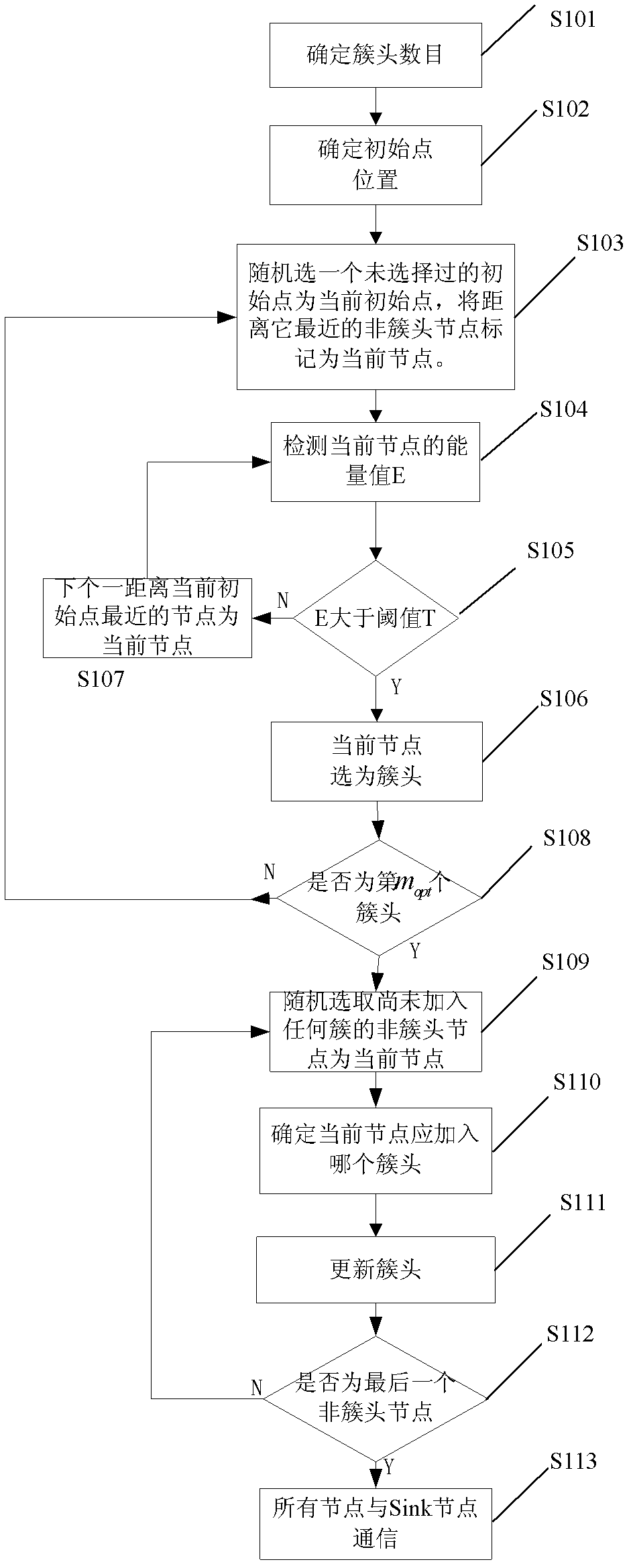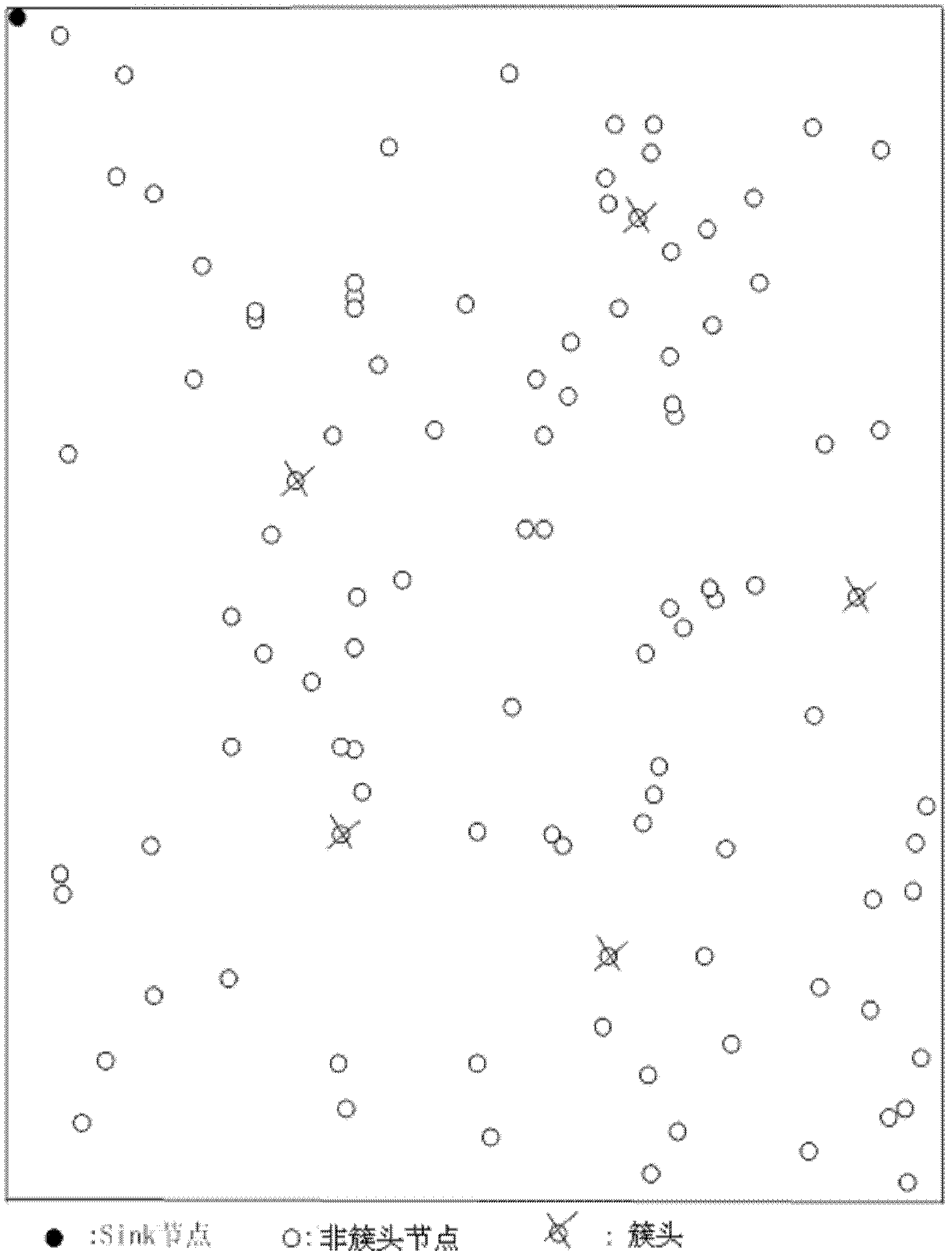A routing method for bridge status monitoring based on wireless sensor network
A wireless sensor network and status technology, applied in network topology, wireless communication, advanced technology, etc., can solve the problems of distribution at the edge of wireless sensor network, ineffective bridge status monitoring, large space span, etc., to improve transmission Speed and transmission efficiency, load balancing, and the effect of reducing network energy consumption
- Summary
- Abstract
- Description
- Claims
- Application Information
AI Technical Summary
Problems solved by technology
Method used
Image
Examples
Embodiment approach 1
[0084] Implementation Mode 1: see Figure 6 , this embodiment is mainly applied to the situation where the distribution distance of nodes in the network area is small, or the bridge span is small, and the virtual cluster head node is not used to communicate with the sink node.
[0085] a. Mark each cluster head node whose distance from the Sink node is not greater than the node communication distance S as communicable; perform step S113-2;
[0086] b. Mark the unmarked communicable cluster head nodes within the range of S distance around each communicable cluster head node as communicable; and so on, until there is no cluster head node that can continue to be marked;
[0087] c. Judging that the cluster head node marked as communicable is m opt , the result is yes;
[0088] d. Each cluster head node communicates with the Sink node through a multi-hop relay according to the Dijkstra algorithm, and the non-cluster head nodes in the cluster of the cluster head node communicate ...
Embodiment approach 2
[0090] Implementation mode two: see Figure 7 , the difference between this embodiment and the routing method of Embodiment 1 is that, when it is judged that the cluster head node marked as communicable is m opt If the result is no, the virtual cluster head is used to communicate with the Sink node. This embodiment is mainly applied to the situation where the distribution distance of the nodes in the network area is relatively large, or the span of the bridge is relatively large, and the nodes need to use the virtual cluster head node to communicate with the Sink node.
[0091] Step 1. Mark each cluster head node whose distance from the Sink node is not greater than the node communication distance S as communicable; execute step S113-2;
[0092] Step 2. Mark the unmarked communicable cluster head nodes within the range of S distance around each communicable cluster head node as communicable; and so on until there is no cluster head node that can continue to be marked;
[009...
PUM
 Login to View More
Login to View More Abstract
Description
Claims
Application Information
 Login to View More
Login to View More - R&D
- Intellectual Property
- Life Sciences
- Materials
- Tech Scout
- Unparalleled Data Quality
- Higher Quality Content
- 60% Fewer Hallucinations
Browse by: Latest US Patents, China's latest patents, Technical Efficacy Thesaurus, Application Domain, Technology Topic, Popular Technical Reports.
© 2025 PatSnap. All rights reserved.Legal|Privacy policy|Modern Slavery Act Transparency Statement|Sitemap|About US| Contact US: help@patsnap.com



